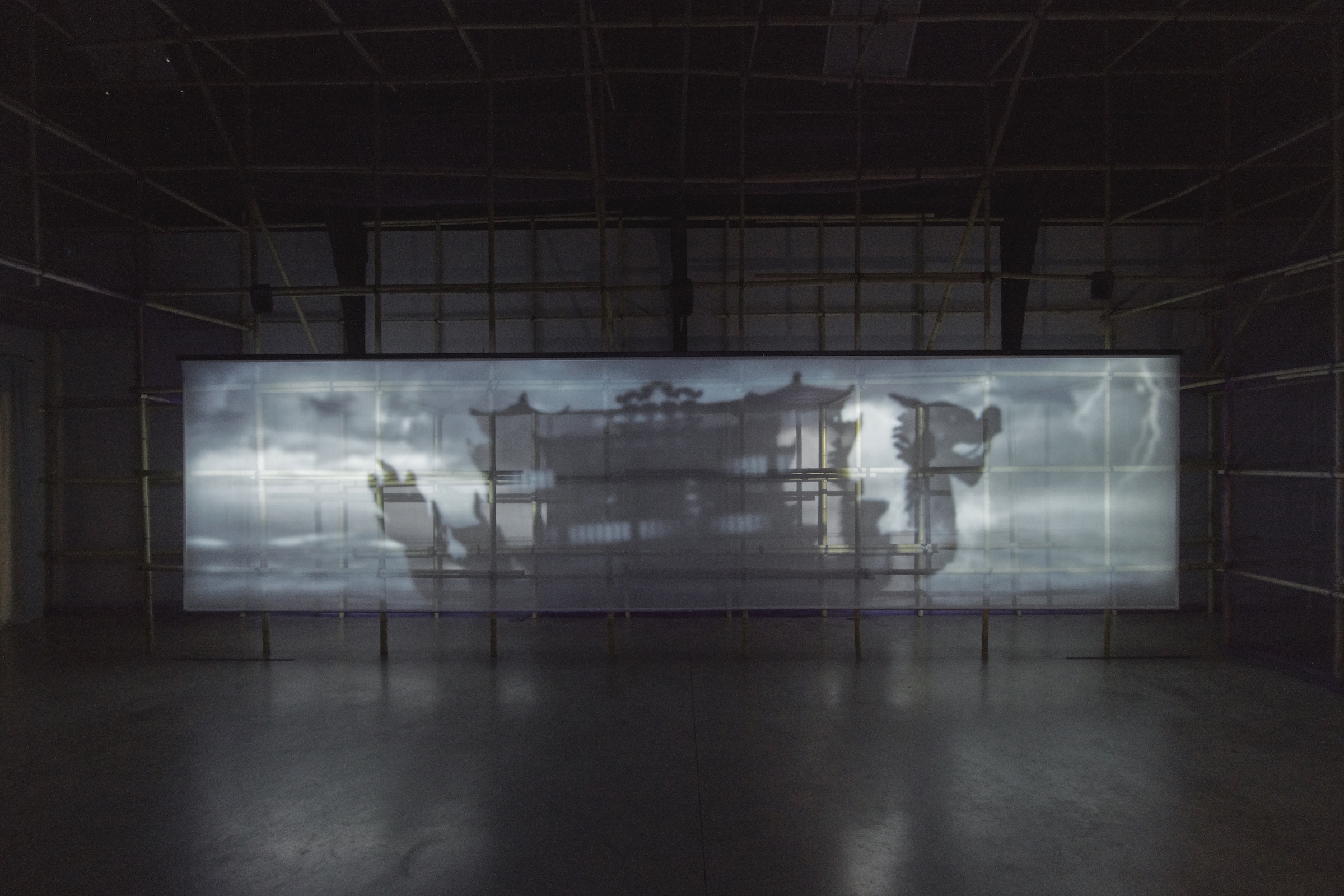LONDON — In the early 1990s, a Shanghai entrepreneur commissioned a three-story ship decorated with a glut of Cantonese-style carvings and topped with a massive dragon head. Designed as a floating Chinese restaurant — a phenomenon that only exists outside of China — the ship was sailed to Europe and docked in a meandering series of port cities. After years of restaurant service, it was towed to the Gröna Lund amusement park in Stockholm, Sweden, where it was repurposed as a funhouse. It was eventually closed and fell into ruin, haunted by its cultural legacy and its many lives.
This ship, the Floating Sea Palace, is the inspiration and setting for artist Lap-See Lam’s new film installation on view at Studio Voltaire, part of a cycle of pieces developed from her solo presentation at the Venice Biennale’s Nordic Pavilion. For Lam, whose work explores Hong Kong Chinese diasporic identity, emigration, and intergenerational loss, the Floating Sea Palace encapsulates the contradictions inherent in these issues: Like many Chinese restaurants in Western countries, the ship represents a commercialized exoticization of Chinese culture while also bearing witness to a complex, shared identity.

Taking its name from the ship itself, Lam’s film is projected onto a translucent screen stretched across a bamboo scaffold structure that envelops the exhibition space, inspired by the elaborate temporary structures built to stage Cantonese operas. Visitors enter behind the screen, meaning they initially experience the film as a wash of sound, light, and flashes of mirrored images. It’s an appropriately disorienting introduction to a work that revels in the contradictions and multiplicities of diasporic identity, centering on the character of Lo Ting, a human-fish hybrid who is the folkloric ancestor of the people of Hong Kong.
Throughout the film, the characters sporadically repeat the phrase “begin again” in both English and Cantonese, prompting the retelling of their stories or new iterations of previously seen visual material. As a storm begins to break up the ship, the clips and voiceovers become increasingly jumbled. There is a cyclical narrative at play, one that degrades but also becomes richer with each retelling, echoing the ways in which the ship has repeatedly been repurposed. Though ostensibly less grand with each new identity, its culturally symbolic power has only grown.
Lam filmed much of the piece on board the ship’s structure, dwelling on its latest iteration as a haunted house fairground attraction, where its owners brazenly drew on harmful racial stereotypes to advertise it as “a ship from the Orient with a thousand-year curse.” The artist plays with the idea of haunting throughout the film, from cheap fairground tricks and the lazy typecasting that reverberates through Western representations of Chinese culture to notions of intergenerational identity, collective memory, and the retracing of migratory routes. As one of the characters in the film puts it, “the ship creaks with the strain of its own hauntology.”
The Floating Sea Palace never reaches its destination, instead left to weather literal and metaphorical storms. Like many members of diasporic communities, it is unmoored and adrift, carrying the cargo of its homeland into new territories. Lam suggests that such dislocation inevitably results in mistranslation; but while it can be isolating, it also holds rich potential for new expression.


Lap-See Lam: Floating Sea Palace continues at Studio Voltaire (1A Nelsons Row, London, United Kingdom) through December 15. The exhibition was organized by the gallery.

